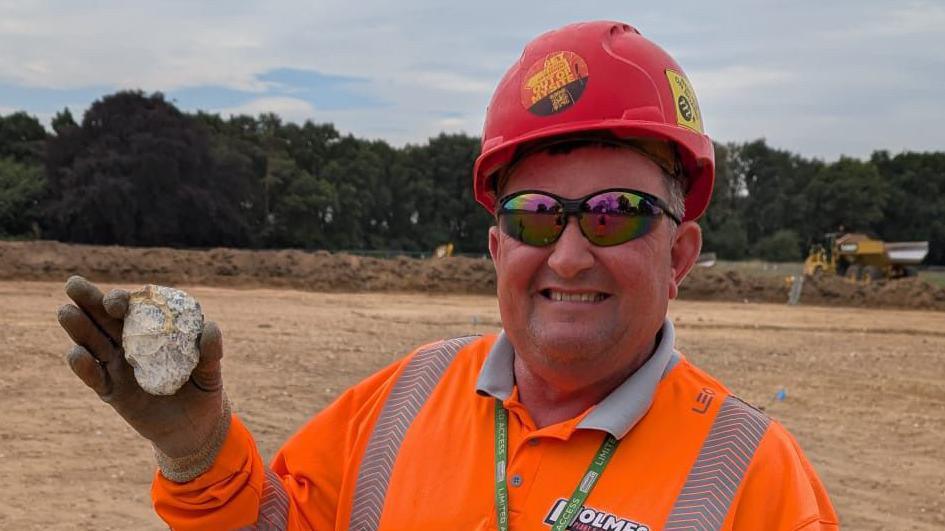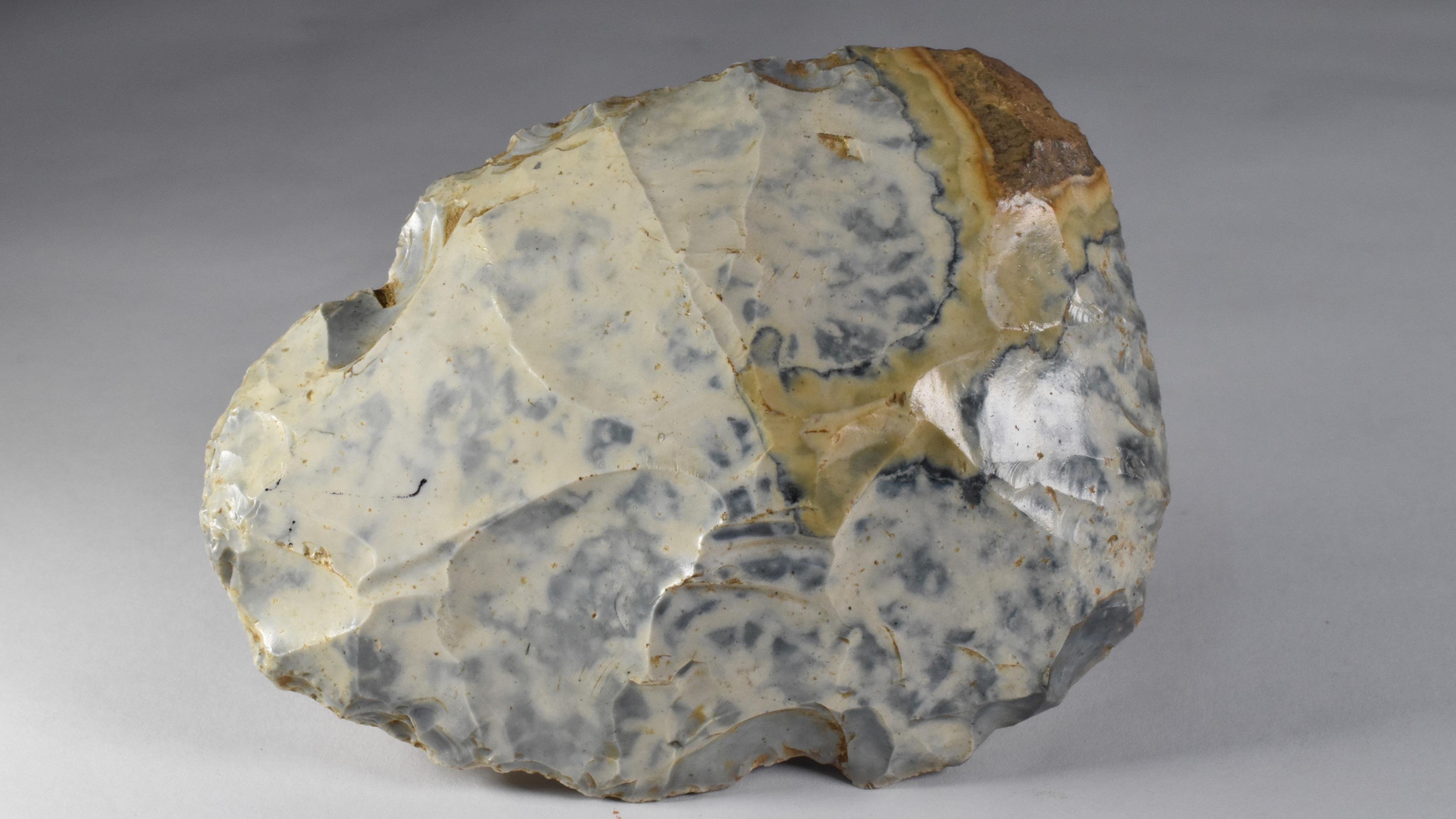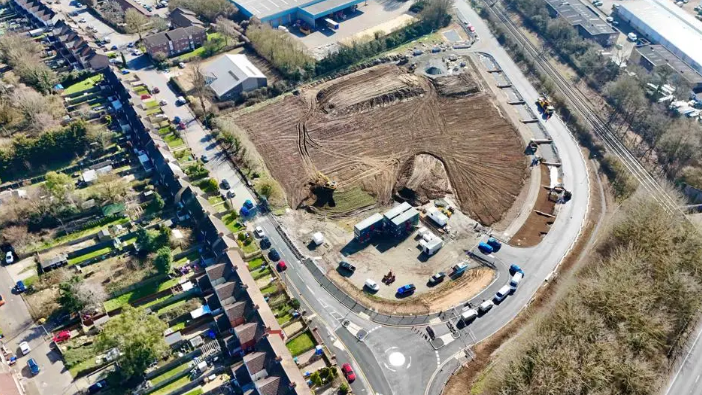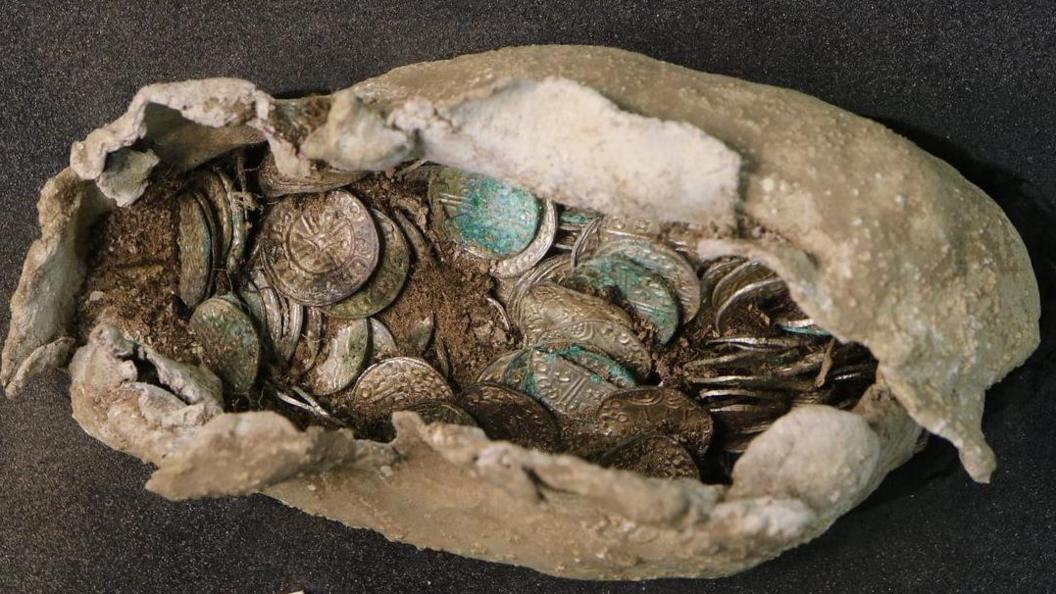Man finds prehistoric handaxe on his tea break

Colin Cooley found the handaxe at the end of a tea break on the Sizewell C site
- Published
A man discovered a prehistoric handaxe while he was "kicking his feet" on the ground during a tea break.
Colin Cooley, 57, from Otley, Suffolk, works as a dumper driver on the Sizewell C excavation site.
Toward the end of a tea break, he noticed a piece of rock that he believed looked like a handaxe.
"All hell broke loose" when it was confirmed to be between 36,000 and 59,000 years old, and Hadley Sharman, an archaeologist working on the site, added it was a "blinder" of a find.

Archaeologists believed the handaxe had rolled among glacial sediment for millennia
"It was a normal day at work and we'd just finished our tea break," Mr Cooley explained.
"I was on my way back to the dumper, kicking my feet, and I thought, 'Hang on, that looks like an axehead'.
"I handed it in to one of the archaeologists... a little while later they ran up to me and said, 'Colin, Colin, you've found an axehead'.
"Then all hell broke loose, everyone got excited over the find because one hadn't been found for ages."
Mr Cooley also enjoys metal detecting - something he has been doing for the past year, which had helped him develop a keen eye for artefacts.
He had also previously discovered a rare Byzantine pilgrim souvenir.
"I'm a fisherman as well, it's the hunt, that's all it is to me, the hunt," he added.
"It doesn't matter what you find, you're chasing it all the time.
"Hopefully, one day I'll find some gold coins, but you never know."

Hadley Sharman interviewed Mr Cooley after his discovery for a blog post on Oxford Cotswold Archaeology's website
The prehistoric handaxe weighs just 166g and is 11cm tall and 8cm wide.
It is believed a Neanderthal could have used a hard stone to remove large flakes off it to form its shape, and then used a softer item like a deer antler to refine it on both sides.
Mr Sharman, 27, from Ipswich, works for Oxford Cotswold Archaeology and has been working on Sizewell C for the past three years.
He explained the handaxe was "not something you find every day", with fewer than 100 of them having been found in Britain before.
"This was a spectacular find that no one was expecting," he said.
"It was a chance discovery, and it's not something you can search for.
"Although we call this a handaxe, it was more of a prehistoric Swiss army knife used for many different purposes.
"It could be used for butchering animals, chopping plant materials, particularly wood, but also, there has been evidence people used these for digging.
"When you see these up close and personal, they fit perfectly in your hand and you realise how ergonomic they were."
Get in touch
Do you have a story suggestion for Suffolk?
Follow Suffolk news on BBC Sounds, Facebook, external, Instagram, external and X, external.
Related topics
Stories like this
- Published20 April

- Published16 April

- Published7 January
